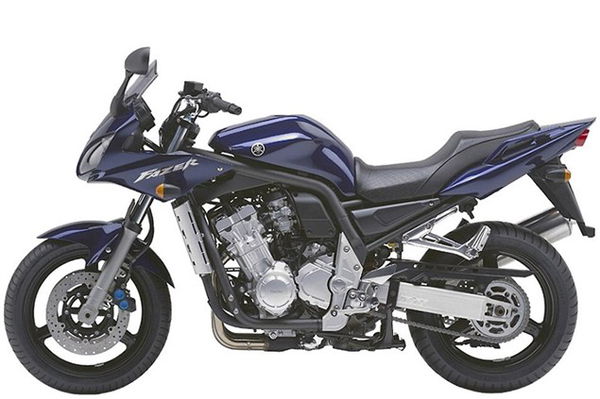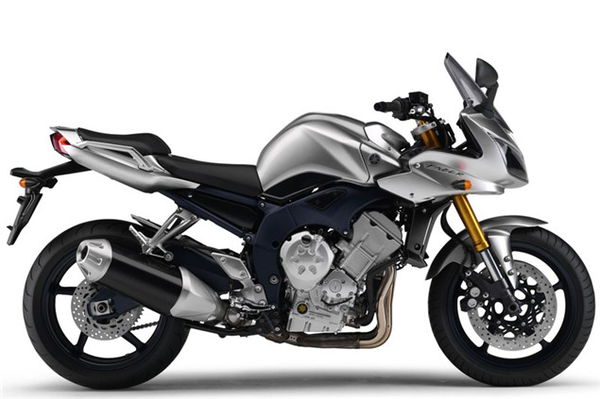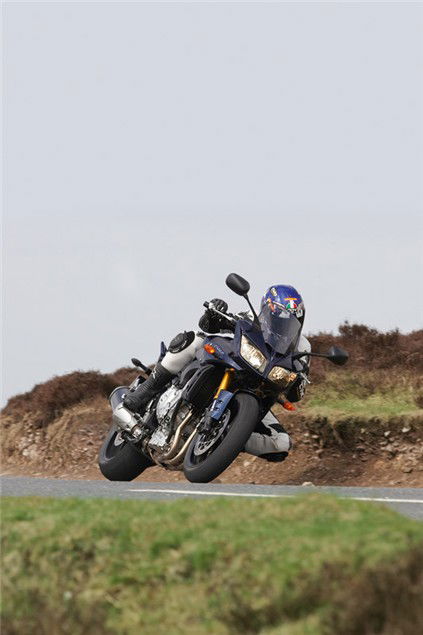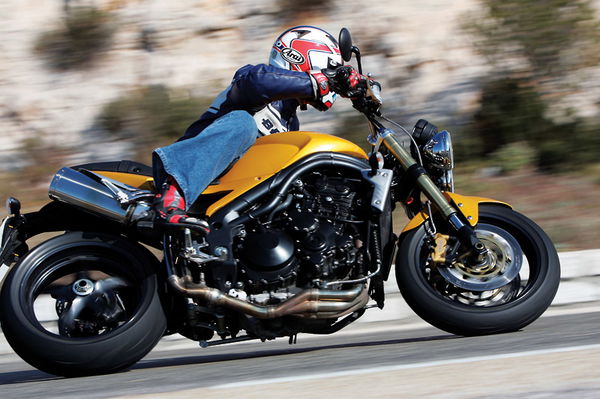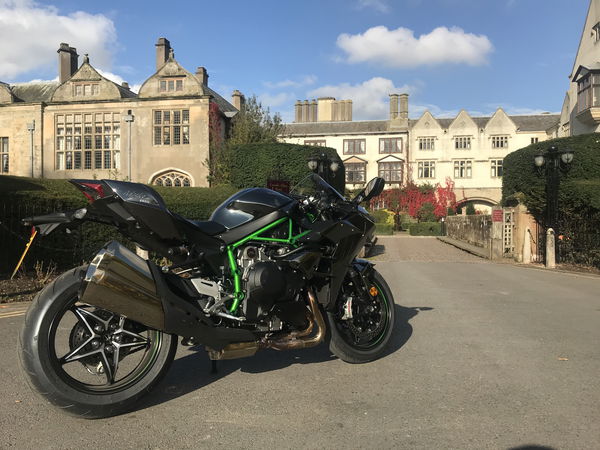Buyer Guide: Yamaha Fazer 1000
The ultimate buyers guide to the Yamaha Fazer 1000 written by the people who actually own the bike…
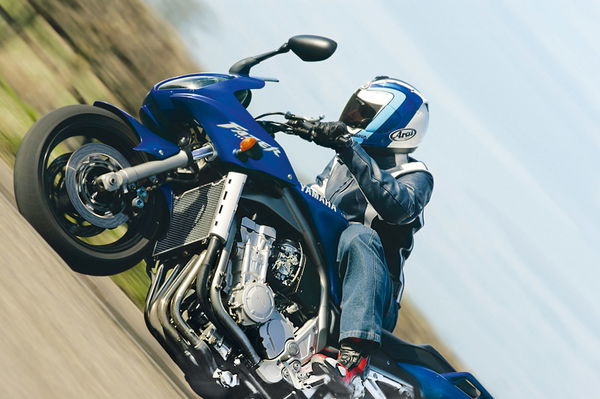

Click to view: Yamaha Fazer 1000 owners reviews, specs and image galleries.
We all wanted an unfaired R1 with high bars. What Yamaha delivered was so much more. The first Fazer 1000 did have an R1 engine but wrapped around it was a chassis which meant the Fazer was practical, comfortable and useable every day as well as being able to hitch up it skirts and mix it with the best of them when required.
It wasn’t quite as sharp as an R1 – but owners soon found they could upgrade their Fazers and make them a dynamic match for pretty much anything on the road. So after an uncertain beginning when a few press hacks moaned the Fazer wasn’t the lairy stunt beast they’d wanted to play on for a few afternoons, the bike buying public were treated to a new type of bike existing in the top strata of motorcycling.
During its five year run the MK I Fazer 1000 developed a cult following. Not because it was quirky, simply because it was so rapid and capable. From track day to commuting to touring it excelled. Yamaha then started developing a MK II version using a newer fuel injected motor, bespoke aluminium frame and they listened to the focus groups who said: “make it more sporty”. The result didn’t impress everyone.
The all new 2006 replacement for the original Fazer, called the FZ1 or FZ1 Fazer was less comfy, had a smaller tank range and a very snatchy power delivery. The FZ1 never matched the original FZS1000 Fazer’s popularity. Both generations of Fazer make superb buys on the used market – excellent bikes as standard which with a little fiddling can be among the best machines on the road.
Yamaha Fazer FZS1000 & FZ1 Specifications
2001 Yamaha Fazer FZS1000
Engine 998cc, l/c, 20 valve, in-line four Power 143bhp @ 10,000rpm Torque 78ftlb @ 7,500rpm
Dry weight 208kg Seat height 820mm Fuel capacity 21 litres Top speed 155mph
2006 Yamaha FZ1 Fazer
Engine 998cc, l/c, 20 valve, in-line four Power 150bhp @ 11,000rpm Torque 78bhp @ 8,000rpm
Dry weight 199kg (205 with ABS) Seat height 815mm Fuel capacity 18 litres Top speed 160mph
2006 Yamaha FZ1 Fazer - naked
Engine 998cc, l/c, 20 valve, in-line four Power 150bhp @ 11,000rpm Torque 78bhp @ 8,000rpm
Dry weight (201 with ABS) Seat height 815mm Fuel capacity 18 litres Top speed 160mph
The nuts & bolts
Tyres
The most popular tyre in the survey was Bridgestone’s BT-020 – a sports touring tyre that’s been replaced by the newer BT-021. The sporty choice is the Pirelli Diablo although these bikes don’t have the ground clearance to exploit the sportiest rubber. The original fitment Metzeler Z4s are not well liked.
- Top five tyres – percent of owners who recommend them
1) Bridgestone BT-020 - 29%
2) Bridgestone BT-021 - 22%
3) Michelin Pilot Road 2CT - 15%
4) Metzeler Z6 Roadtec - 11%
5) Pirelli Diablo - 9%
With regards to the FZ1 and it's 120/70-17 front and 190/50-17 rear, the MK II Fazer also has a massive range of rubber available. Owners fitted a broader range than the MK I bikes and tended to go for sportier tyres which reflect their bikes’ abilities. Not enough MK II bike owners completed the survey to have a meaningful top five but the most recommended tyres were Michelin Pilot Road 2CT and next were Bridgestone BT020/021s.
Running costs
Average fuel consumption was and 43mpg for the FZS1000 and 37mpg for the newer FZ1 although these vary a lot depending on use. The FZS1000 is capable of 55+mpg with a gentle throttle hand and track day use can see either bike guzzling unleaded at 20-something mpg.
Servicing is due every 6,000 miles on both models alternating minor/intermediate. The valve clearances only need doing every 24,000 miles.
Average prices paid for FZS owners were minor £110, intermediate £163, major £312. For the FZ1 the figures are minor £130, intermediate £196 and not enough had carried out a 24,000 mile service to give a figure, but we’d think £350+.
Although the FZ1 bike was group 16 when it came out, insurers have reduced its risk now and it can be quite reasonable to get cover for.
Owner Case Study: "I’ve done 78,000 miles on mine"
Alan Hill bought his 2003 FZS1000 Fazer new and has clocked up 78,000 miles on it since.
"It’s barely had any problems. At 16,000 miles the rear wheel bearings failed and damaged the rear wheel hub but it was replaced under warranty. But other than that it’s been completely problem free over all those miles.
"I’ve been thinking if there’s anything I’d replace it with but there’s no bike I want enough to make me sell mine. If anything I’d get a second bike that complements the Fazer.
"I’ve had the Ivan’s jet kit fitted to mine – it cost about £170 and it makes the bike much smoother and torquier. I got the suspension uprated with stiffer Öhlins springs and had the original shock revalved and a Maxton spring fitted. It made the bike feel better than new but it had done 60,000 miles on the OE suspension so it was feeling a bit baggy!
"I commute 40 miles every day on the bike and I use it for touring too so that’s how I’ve covered the miles. I did a charity trip (www.roundthebend.org) last year – 3,400 miles in eight days round the coast of the UK. The bike coped superbly. I got a bit of a sore backside around day three or four. A mate did the trip with me on his BMW GS Adventure and everyone says they’re the bike to do distance on but even he was impressed the way my Fazer coped.
"My only problem is I’ll be rally stuck for what to get next when it is time to replace it."
Ivan who?
Anyone into Fazer 1000s will talk about ‘Ivan’s kits.’ They’re referring to Fazer tuning expert Ivan Rovinsky of Rockland County Motorcycles, USA. He’s developed a range of tuning parts for loads of different bikes but the Fazer ones are particularly effective and successful as they make massive improvements to both FZS1000 and FZ1 models. A staggering 68% of the owners who filled in out survey had one of Ivan’s kits fitted to their Fazer 1000.
There are two jet kits for the FZS1000. The first called the SO kit (£104.95) involves modifying the carbs slightly and installing some specially designed internals. The results are impressive – midrange power, something that’s slightly lacking considering the size of the engine is booster massively and throttle response is smoother too. Top end power’s increased as well. It works on standard bikes and ones with slip on exhaust cans.
It takes about 3-4 hours for a competent DIY mechanic to install if they’re never done it before. It’s not a job for beginners as you have to drill the carb slides. The second kit for the FZS1000 is called the MB kit. It gives even more power throughout the rev range and aids smoothness as well. It works on bikes with end cans or full exhausts – if fitted to a standard bike then the carb intake rubbers should be trimmed and more power gains can be had by modifying the airbox – although performance air filters aren’t needed as the standard one or a BMC Road version work well. Price and fitting time are for the MB kit are the same as the SO kit.
With the FZS1000 sorted, Ivan turned his attention on the newer FZ1. The biggest criticism of it is the snatchy fuelling. Ivan developed an electronic device which cures this, boosts the midrange power by a whopping 10bhp and adds oomph right through the power curve too. It’s called a Fuel Cutout Eliminator (FCE) as it stops the injectors completely turning the fuel off on a closed throttle above 4,500rpm and performs other clever jiggery pokery that Ivan won’t disclose. The FCE costs £149.95 and should only take a DIY mechanic about an hour to fit.
All the Ivan’s products are available in the UK from SG Motorsport (02392 789823).
The Fazer Owners Club Unofficial website (www.foc-u.co.uk) has loads of helpful information to help fit these products and tons more facts plus loads more – well worth a look for anyone considering a Fazer.
If you don’t fancy fitting an Ivan’s kit yourself, one of the Foccers does them for a reasonable fee. Email him at mikegreatorex@hotmail.com.
What goes wrong
Not a lot. These are reliable bikes despite clocking up well above average mileages. On FZS1000 models the most common problem is the EXUP valve prone to seizing so it needs regular greasing. There’s the one case of water pump impellor/seal failure and someone else who things theirs could be about to do the same as there’s a tell tale smidge of coolant coming from a weep hole on the bottom of the engine. There’s a handful of failed wheel bearings and batteries but these can be classed as consumables, that’s it – these are incredibly reliable machines.
On the FZ1 the EXUP valve’s been moved from the collector box to the end can and seems to suffer less.
Modifications
Starting with the FZS about a third of owners have modified the suspension as it’s seen as poor as standard. K-Tech is most popular for re-working the forks but some owners just fit firmer springs themselves. Replacement rear shocks are popular – Ohlins and WP are most popular but a Maxton re-work can provide an economical alternative. Fitting shorter dog bone links raises the rear and speeds steering up too.
Owner Case Study: "I’ve had both versions"
Andy Lovatt got rid of his 2004 R1 as he wanted a bike that was better for touring on and to stop him riding too fast on the road.
"I bought a 56 plate FZ1 Fazer – the second generation bike with the fairing. The tank range was horrendous – I was getting 120 miles until the light came on. The fuelling was bad as well. There was no torque at the bottom end then it came in hard at about 6,000 or 7,000 rpm. It was snatchy too. I had an Ivan’s Fuel Cutoff Eliminator (FCE) fitted so sort this – an electrical black box which cost about £140. It fixed it too but the bike started bringing up fault codes. I took it back to Yamaha who said the FCE was causing the problems. They took it off and the bike was fine – but it was snatchy again.
"There was also an issue as to the strength of the rear subframe – Givi would only recommend their smaller top boxes for it. I got rid of it and had a GSX-R1000 for a year, then I found a first generation FZS1000 Fazer with just 3,000 miles on the clock. It was a much better bike than the second generation one. It’s much more torquey and it’ll do 220miles to the fuel light if you’re not going mad.
“The first generation bike may have been a parts bin special but I think it was an absolute star. God knows what they spent developing the later model but it’s not nearly as good."
